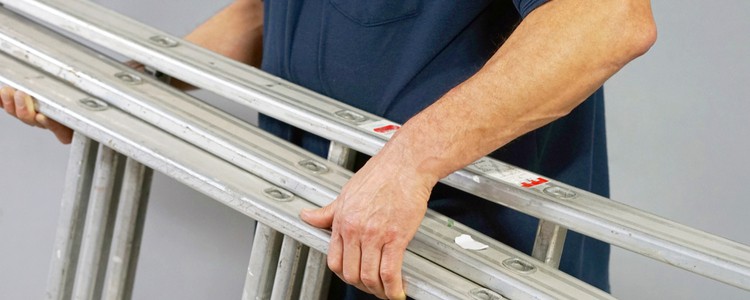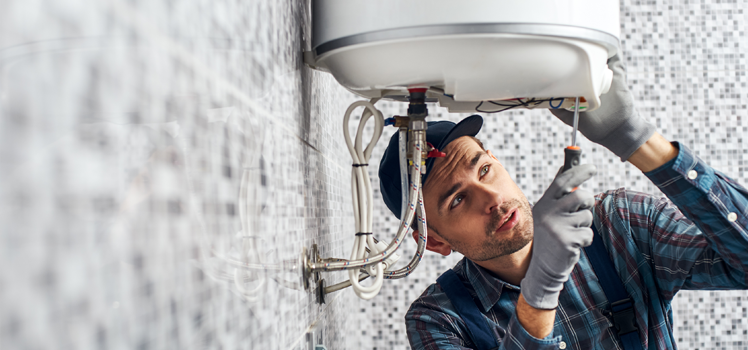Ladders are simple tools and quite straightforward to use – yet there are a few things you need to consider first. Incorrect use of ladders has led to many painful accidents that could easily have been avoided. So, whether you use ladders all the time for work or you are a DIY-er who has decided to do home renovations that require a ladder, here are some helpful tips to avoid unwanted accidents.
Types of ladders
To begin with, it is important to know what types of ladders are out there and which one will be best suited for your project.
Stepladder
The stepladder consists of two sets of rungs (steps) evenly spaced with a top cap that connects them together. It is one of the most popular ladder types, with many uses. It is self-supporting and provides a good amount of stability. This also makes it perfect to use in different places. You can use one to change the light or to reach above cabinets and other high places, etc. Usually, you can use both sides of stepladders but there are some models that only have one side for climbing, with the other simply there for support.
Extension ladders
Since stepladders are limited in height, extension ladders are better for higher places and outside work. Extension ladders have a section that stays on the ground and a sliding section that is extended to increase its reach. The sliding section extends upwards by hooks or a rope and a pulley system. The ladder is fitted with no-skid feet for extra security. This ladder needs to lean against a wall as it cannot support itself.
Multipurpose ladders
Multipurpose ladders are quite versatile, as they combine features of both step and extension ladders. They can be self-supporting or you can lean them against a wall. Certain models of multipurpose ladders can even act as scaffolding, depending on the project.
Materials
Ladders can be made from different materials, and it’s important to choose one that is suitable for your project and your pocket.
Aluminium
Aluminium can be a great choice for many projects. It is light enough so you can move it easily and strong enough to withstand any punishment and stay in good condition. Another plus is that aluminium ladders are relatively affordable.
Wood
Wood is another affordable option and ladders made from it share many qualities with aluminium ones. However, wooden ladders are almost twice as heavy as aluminium ones and they will also deteriorate over time if left outside to brave the elements.
Fibreglass
Fibreglass ladders tend to be a bit more expensive than aluminium and wooden ones but the benefits may outweigh the price difference. Fibreglass is strong and durable and it does not conduct electricity like an aluminium ladder would.
Steel
Steel ladders are not recommended for DIY-ers as they are more suited for warehouse use. They are heavy, durable and reliable and can take heavier loads. They are also quite heavy to move around.
Plastic
You can also find plastic ladders made from polyester resin reinforced with fibreglass. They may be suitable for some projects and they are also a cost-effective option.
Exercise caution when using ladders
When using a ladder make sure it is placed on even ground and is stable before climbing on it. For pull-out ladders, make sure that everything has clicked into place and the ladder is safe for use.
You can also use the 4-to-1 rule to help you stay safe. For every four feet of your ladder’s height, the bottom should be one foot away from whatever it is leaning on.
Always read the ladder’s labels before using it as these will help you make sure you use the right ladder for your project and remind you how to use it safely.









